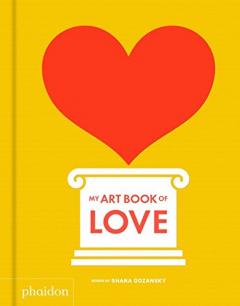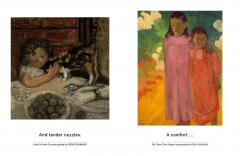A tender and wise ode to love, illustrated with an expertly curated selection of fine art for young children
Art, like anything else, is only as meaningful and interesting as it is relatable. For toddlers and preschoolers, connecting their own experiences of love to those they see on the canvas allows them to truly engage with the material. 35 full-page artworks feature love in all its forms, accompanied by a brief and gentle read-aloud text. Each artwork's title and artist's name are included as secondary read-aloud text, for true integration of narrative and information. This stylishly compact art book is this first title in the My Art Book series, which suits lovey and artsy families alike!



